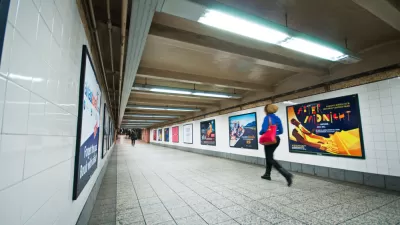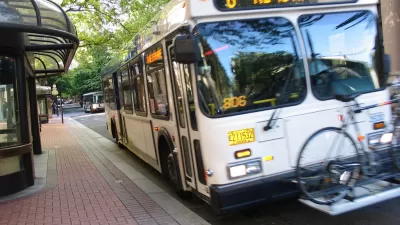A new study, jointly produced by the American Public Transportation Association (APTA) and the National Association of Realtors (NAR), finds evidence of dramatic increases in the value of real estate located proximate to public transit.

"Property values of residential and commercial buildings increase dramatically when located close to transit, according to a joint study from the American Public Transportation Association (APTA) and the National Association of Realtors (NAR)," according to an article by Chris Teale.
Analyzing data from seven metropolitan regions (Boston; Eugene, OR; Hartford, CT; Los Angeles; Minneapolis-St. Paul; Phoenix; and Seattle),
"[t]he associations found that residential properties within a half-mile of public transit options (heavy rail, light rail, commuter rail and bus rapid transit) had a 4%-24% higher median sale price between 2012 and 2016." Similarly located commercial properties also gained value during the same time period.
Another key finding of the study pertained to the savings of residents who live near transit.
Now the question is how effective cities will be leveraging that knowledge to mitigate ongoing crises of climate change and housing affordability.
FULL STORY: Property values 'thrive' near transit, study finds

Alabama: Trump Terminates Settlements for Black Communities Harmed By Raw Sewage
Trump deemed the landmark civil rights agreement “illegal DEI and environmental justice policy.”

Planetizen Federal Action Tracker
A weekly monitor of how Trump’s orders and actions are impacting planners and planning in America.

The 120 Year Old Tiny Home Villages That Sheltered San Francisco’s Earthquake Refugees
More than a century ago, San Francisco mobilized to house thousands of residents displaced by the 1906 earthquake. Could their strategy offer a model for the present?

LA’s Tree Emergency Goes Beyond Vandalism
After a vandal destroyed dozens of downtown LA trees, Mayor Karen Bass vowed to replace them. Days later, she slashed the city’s tree budget.

Sacramento Leads Nation With Bus-Mounted Bike Lane Enforcement Cameras
The city is the first to use its bus-mounted traffic enforcement system to cite drivers who park or drive in bike lanes.

Seattle Voters Approve Social Housing Referendum
Voters approved a corporate tax to fund the city’s housing authority despite an opposition campaign funded by Amazon and Microsoft.
Urban Design for Planners 1: Software Tools
This six-course series explores essential urban design concepts using open source software and equips planners with the tools they need to participate fully in the urban design process.
Planning for Universal Design
Learn the tools for implementing Universal Design in planning regulations.
Ada County Highway District
Clanton & Associates, Inc.
Jessamine County Fiscal Court
Institute for Housing and Urban Development Studies (IHS)
City of Grandview
Harvard GSD Executive Education
Toledo-Lucas County Plan Commissions
Salt Lake City
NYU Wagner Graduate School of Public Service





























